Incredible lost war bunkers that were recently rediscovered
Incredible underground discoveries
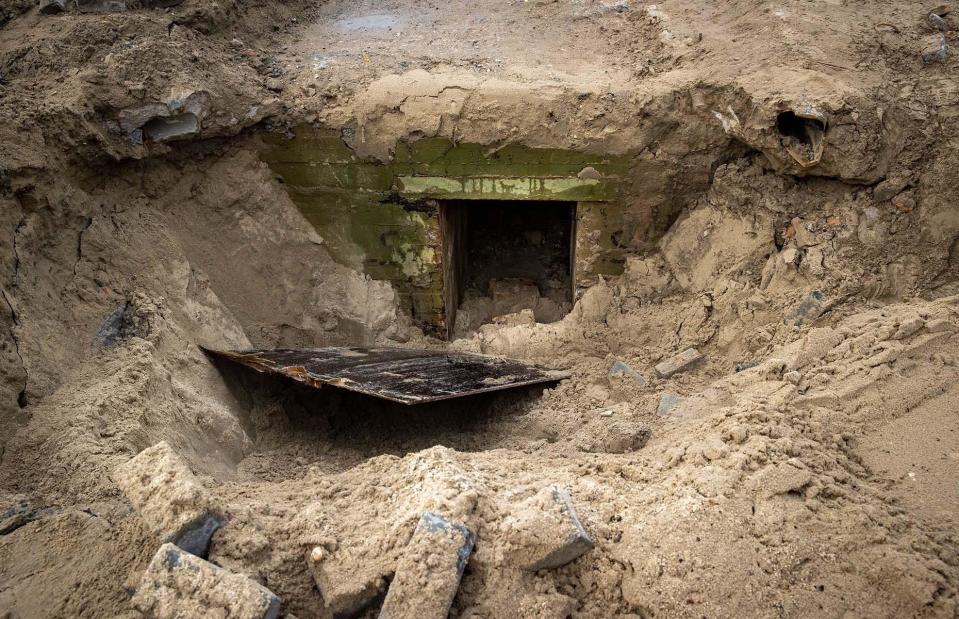
Belga News Agency / Alamy Stock Photo
By their very nature, wartime bunkers were built to protect soldiers and civilians from enemy weapons and shield them from view. Hidden away with disguised entrances, some of these abandoned bunkers were forgotten and their secrets sealed up with them.
Now archaeologists and everyday homeowners alike are uncovering these lost underground shelters all the time, sharing their fascinating history with the world. Read on to tour six extraordinary bunkers that were discovered in the most unlikely places...
First World War bunkers and tunnels, Wijtschate, Belgium
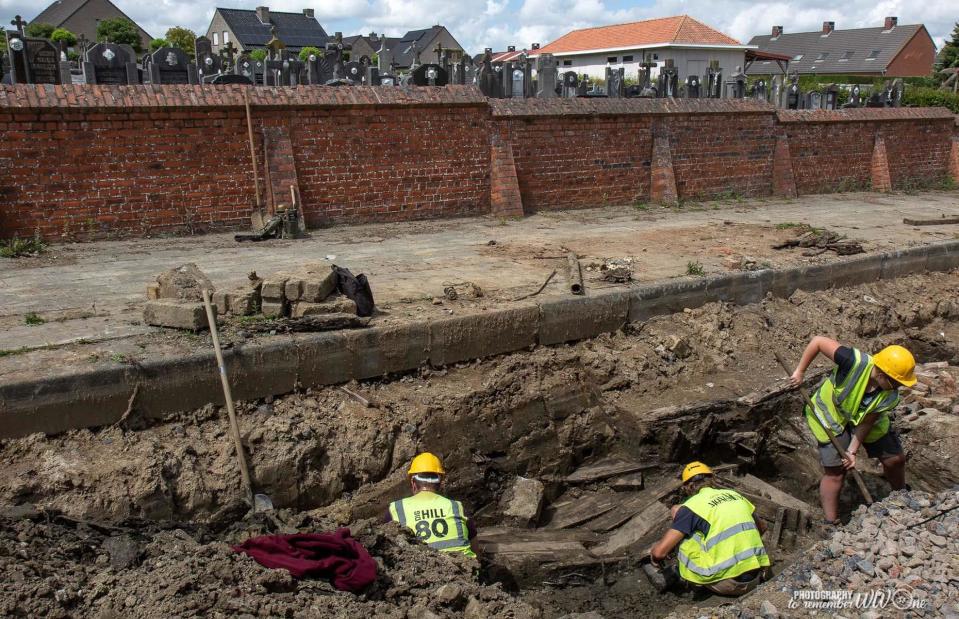
Photography to remember WWOne
In 2019, workmen digging a new sewer system in the centre of Wijtschate, Belgium stumbled upon artefacts hidden in the soil. Archaeologists were called in and they quickly realised that they'd discovered one of the largest underground bunker and tunnel systems of the First World War – and that it may contain the remains of fallen soldiers.
Thanks to these incredible photos taken by Photography to remember WWOne, we can take a glimpse at what they uncovered...
First World War bunkers and tunnels, Wijtschate, Belgium

Photography to remember WWOne
Six entrances to the bunker complex were found, each accessed by 21 wooden steps. At 20 feet deep, the underground system would have been shellproof, protecting the 300 German soldiers who sheltered inside.
However, when British, Irish and Australian forces attacked Wijtschate during the Battle of Messines in 1917, they launched millions of shells at the site, causing the walls and ceilings to collapse and trapping soldiers underground, according to The Times.
First World War bunkers and tunnels, Wijtschate, Belgium

Photography to remember WWOne
French and Belgian trenches were notoriously muddy and waterlogged and these were no exception, as we can see from the wooden duckboards that were unearthed at the site. They would have been used to help soldiers keep their footing in muddy conditions.
This metal stretcher was also discovered on the dig. Just looking at it transports you back in time, from the quiet, modern-day village of Wijtschate to the trenches of the First World War.
First World War bunkers and tunnels, Wijtschate, Belgium

Photography to remember WWOne
All sorts of artefacts have been uncovered at the site, including this perfectly preserved cartwheel. Other items include gas shells, mortars, stick grenades, a medallion, bullets and even soldiers' boot heels.
“The village was completely destroyed during the war, so in that street we find hundreds of artefacts that can be connected to the war," Sam De Decker, of the Flemish Heritage Agency told The Times.
First World War bunkers and tunnels, Wijtschate, Belgium

Photography to remember WWOne
“It would have been smaller than you think inside," German military historian Robin Schaefer says of the bunkers. "There would have been very cramped little rooms, not comfortable at all and very oppressive with low ceilings.
“After the battle, the whole area was like the surface of the moon. Everything was shelled to smithereens; we are talking millions and millions of shells. The entrance shafts to this dugout may have collapsed under the shell fire. Most of the men were taken prisoner but many of them were never found and they still rest there. There could be a real time capsule in the tunnel.”
Whether this German helmet was discarded as the soldier was captured, or its owner suffered a more tragic fate, may never be known.
Second World War bunker, Knokke-Heist, Belgium

Sam De Decker / Kris Vandevorst Agency / Immovable Heritage
In April 2024, workers embarking on a nature restoration project in a Belgian park hit upon a long-lost relic of the Second World War.
As they restored coastal dunes and removed invasive plants at the Director-General Willemspark in the coastal town of Knokke-Heist, three "completely intact bunkers" were uncovered lying just a few inches below the surface, according to a press release issued by the local municipality.
Second World War bunker, Knokke-Heist, Belgium

Sam De Decker / Kris Vandevorst Agency / Immovable Heritage
The dunes cover almost 50 acres of Flanders, which saw intense fighting during both world wars. During the First World War, the area was the site of two German heavy artillery batteries. The batteries, called 'Freya' and 'Augusta', included cannons, observation bunkers, barracks and various trenches and barricades.
After the war, almost all the structures were demolished. However, 35 years later, the area became a German stronghold once again...
Second World War bunker, Knokke-Heist, Belgium
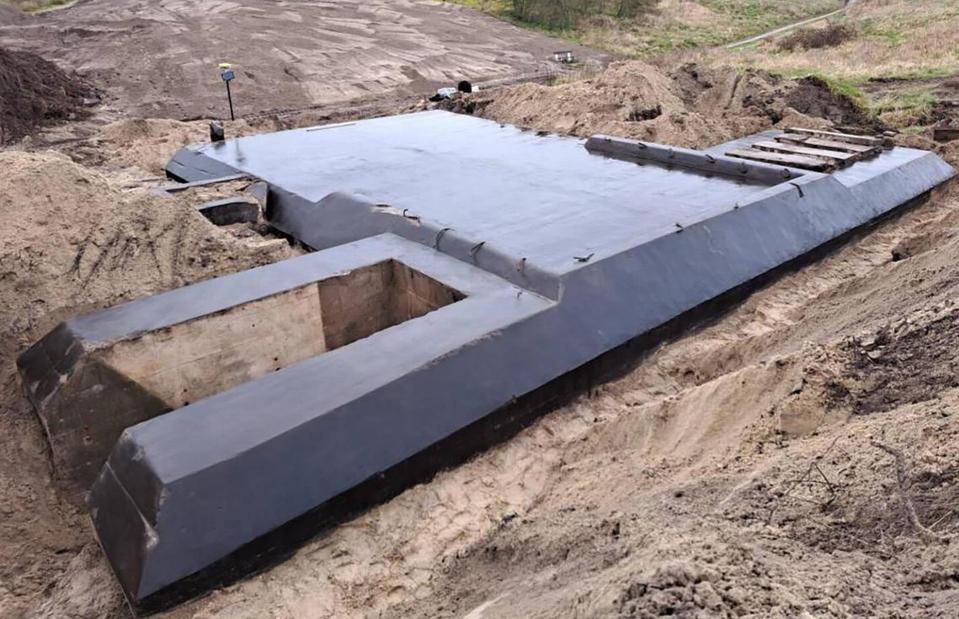
Sam De Decker / Kris Vandevorst Agency / Immovable Heritage
Construction began on the base – known as the 'Stützpunkt Heyst' or 'Heist Base' – in 1942. It became part of the Atlantic Wall, Hitler's line of defensive coastal structures that stretched all the way from the northernmost tip of Norway right down to the French-Spanish border.
Archaeologists working on the site uncovered three 'lighter' VF2a bunkers – including this fully excavated one. Thanks to aerial photos and contemporary descriptions, experts believe the site was an "impregnable fortress" made up of around sixty buildings, including ammunition bunkers, barracks, heavy gun platforms and an anti-tank wall.
Second World War bunker, Knokke-Heist, Belgium

Sam De Decker / Kris Vandevorst Agency / Immovable Heritage
Abandoned and forgotten for almost 80 years, the bunkers contained little but sand and seawater. Each one consists of one chamber measuring almost 20 by 23 feet, with walls and a roof made from three-foot thick reinforced concrete.
While remnants of the First World War weren't discovered during the excavation, other Second World War structures including two brick trenches, a fragment of a concrete track and a well were found. It's believed more buildings almost certainly exist beneath the sand, but they remain buried – for now.
Second World War bunker, Knokke-Heist, Belgium
![<p>Eddydemunter / Wikimedia Commons [CC BY-SA 4.0]</p>](https://s.yimg.com/ny/api/res/1.2/yKmWhKUgM9qsM.jeHAFBEQ--/YXBwaWQ9aGlnaGxhbmRlcjt3PTk2MDtoPTYxOQ--/https://media.zenfs.com/en/loveproperty_uk_165/c7f61056b4b5c8e7679e95847042304b)
Eddydemunter / Wikimedia Commons [CC BY-SA 4.0]
Archaeologists also uncovered piles of rubbish left over from the war, including utensils, fragments of water pipes, cabling and even ammunition.
After thorough examination and documentation, it was deemed that the restoration of the dunes took precedence over the wartime discoveries and the bunkers were once again covered with sand, so that they might be preserved for the future.
American WWII training bunker, Saunton Sands, UK
![<p>Tom Jolliffe / Wikimedia Commons [CC BY-SA 2.0]</p>](https://s.yimg.com/ny/api/res/1.2/vN9Sh8gwwjXKPKhFAMkJ7A--/YXBwaWQ9aGlnaGxhbmRlcjt3PTk2MDtoPTYxOQ--/https://media.zenfs.com/en/loveproperty_uk_165/151a5d1301a30a767b34b73ae5e25dd4)
Tom Jolliffe / Wikimedia Commons [CC BY-SA 2.0]
Far from being concealed below ground, the remnants of this wartime bunker really were hiding in plain sight. They were discovered in 2021 by David Etheridge, an archaeology lecturer at Strode College, Somerset.
Etheridge was on holiday, sitting on Saunton Sands beach eating fish and chips, when he noticed a man-made structure at the foot of the cliffs. Can you spot it?
American WWII training bunker, Saunton Sands, UK

David Etheridge
Well-concealed by the craggy cliff face, this concrete wall was part of a ruined Second World War bunker guarding the beach. It cleverly utilises part of the natural cave, one of many carved from the cliff face by erosion.
It quickly became clear that it had once been part of an American training bunker. It was potentially one of many built by the 10,000 American soldiers who used the beaches of North Devon to prepare for the Allied invasion of German-occupied France.
American WWII training bunker, Saunton Sands, UK

David Etheridge
Inside, it's clear how much of the foreboding cave is natural and how much is man-made.
“I knew Saunton Sands was used by the US military in preparation for D-Day, and instantly suspected it was part of their training ground," said Etheridge. "I wanted to know more, so when I got back, I looked it up, but to my surprise found nothing, so I contacted the local archaeologists."
American WWII training bunker, Saunton Sands, UK

David Etheridge
“If I hadn't spotted this, in a few years it would have fallen into the sea and no one would have been any the wiser, I'm very pleased I found it," Etheridge added. "The Normandy landings are part of our national consciousness, and this small structure played an important role in ensuring D-Day was a success."
As a result of his findings, Devon County Council confirmed the site would be added to their Historic Environment Record.
American WWII training bunker, Saunton Sands, UK

Simon J Beer / Shutterstock
Brigadier General Paul W Thompson, who led the training, is quoted as saying: "If Waterloo was won on the playing fields of Eton, surely the sands of north Devon beaches contributed importantly to the success of the assault over the Normandy beaches." As a result, re-enactments such as this one are often held on Saunton Sands.
German battery, Grandcamp-Maisy, France

MYCHELE DANIAU / AFP via Getty Images
In a tale akin to an Indiana Jones movie plot, the location of this bunker was only rediscovered after an amateur historian found its position marked on a crumpled map discovered in the pocket of a US soldier's trousers being sold at a memorabilia fair.
Once a key German position during the D-Day landings, the battery at Grandcamp-Maisy covers the size of four football pitches as reported in The Telegraph – yet it lay buried for 60 years, according to Gary Sterne, who unearthed the complex in 2006.
German battery, Grandcamp-Maisy, France

MYCHELE DANIAU / AFP via Getty Images
Historians had long debated the location of the battery and believed the area Sterne (pictured) was searching was "just fields", according to The Telegraph.
However, after travelling from his home in Cheshire, UK to Normandy, Sterne stumbled upon an entrance to the complex, which had been almost entirely reclaimed by Mother Nature.
German battery, Grandcamp-Maisy, France

MYCHELE DANIAU / AFP via Getty Images
Sterne bought a house close to the site and went on to buy up 40 acres of land covering the complex from 32 different owners, before excavating it over two years.
He discovered the remnants of bunkers, trenches, a field hospital, offices and housing for a 155mm cannon. In total, the battery is believed to consist of four cannons, four 105mm guns and twelve anti-aircraft guns.
The site is now open for visitors to explore.
German battery, Grandcamp-Maisy, France

MYCHELE DANIAU / AFP via Getty Images
The Maisy battery was hugely important to the Germans strategically, due to its proximity to Omaha Beach, one of the five beaches Allied forces landed on during D-Day. The American troops suffered 2,400 casualties, many of which may have been inflicted by the guns firing at Maisy.
A US Ranger battalion was sent to secure a different battery, at Pointe Du Hoc, only to find the fire was coming from Maisy. Historians debate whether the British or American command knew of this crucial detail and whether lives were lost needlessly as a result. Sterne himself has written several books on what he and others label a "cover-up".
German battery, Grandcamp-Maisy, France
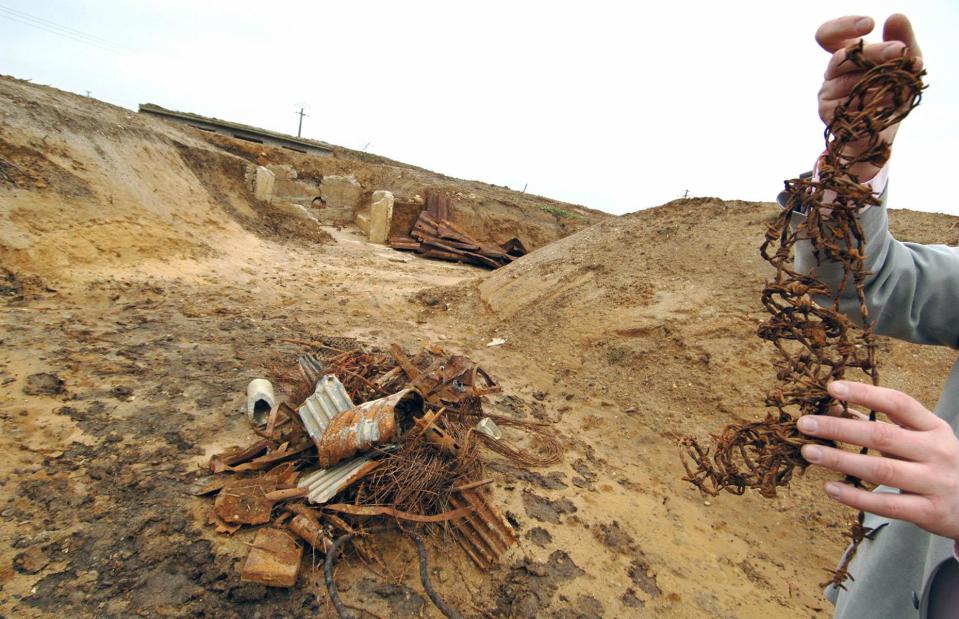
MYCHELE DANIAU / AFP via Getty Images
Dan Farley, then just 17 years old and fighting with the 5th Ranger Battalion, was one of the soldiers who attacked Maisy.
"We go up there and it's all underground bunkers," he recalled in 2014 speaking to Fox8Live TV. "We get in there and we start hand-to-hand combat. The Maisy battery was just as bad as Omaha Beach, if not worse... I got shot in the shoulder. I think I was shot by a sniper."
In 2020, a follow-up excavation revealed new bunkers that "hadn't seen the light of day in 75 years" and are "part of one of the darkest chapters in modern history" according to Josh Gates, host of the Discovery Channel's Expedition Unknown, speaking to Fox News.
Cold War bomb shelter, California, USA

@slocal_estate_auctions / TikTok
While much of our First and Second World War history is to be found in muddy fields, the Cold War left secret fallout shelters dotted around the globe – sometimes in the most surprising places.
Antique hunter Jennifer Little was aiming to salvage some treasures when she visited a property in California in 2021, only to unearth something much more interesting...
Cold War bomb shelter, California, USA
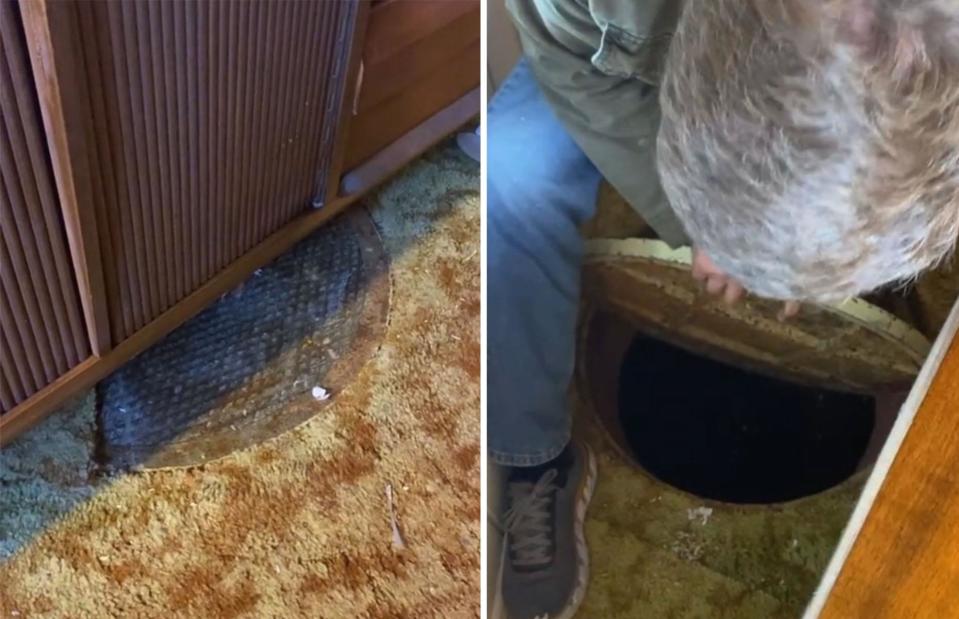
@slocal_estate_auctions / TikTok
When she moved around some furniture in the master bedroom, Little found this manhole cover hidden beneath a 400lb mid-century sideboard and partially obscured by carpet.
The only clues as to what lay below were the ventilation slots that were disguised within the walls and corners of the room.
Cold War bomb shelter, California, USA

@slocal_estate_auctions / TikTok
Understandably less than keen to descend into the dark space herself, Little sent her husband down to investigate.
At first, the pair thought the space must be a Second World War bunker, but quickly realised they had, in fact, discovered a 1950s fallout shelter – a remnant of the Cold War.
Cold War bomb shelter, California, USA

@slocal_estate_auctions / TikTok
Long abandoned, the bunker was filled with rubble and dust and was no longer weather-proof. By the light of his torch, Little's husband discovered two bunk beds and a urinal, as well as a separate storage space for food.
The home was built in 1951, during the height of the Korean War and the same year the Rosenbergs, an American married couple, were convicted of passing atomic secrets to the Soviets. As a result, Little believes the bunker was built at the same time as the house – and was no doubt a selling point!
Cold War bomb shelter, California, USA

@slocal_estate_auctions / TikTok
Close to the bunks, these bottles and jars stood covered in dust. They were likely some of the original provisions stored underground by the first owners.
Unsurprisingly, Little, who goes by the handle @slocal_estate_auctions on TikTok, went viral after she posted a video detailing her discovery.
German seaside bunker, Middelkerke, Belgium

KURT DESPLENTER / BELGA / AFP via Getty Images
In 2021, builders were digging out an area at the seaside resort of Middekerke, Belgium to make way for a new casino when they struck something unusual.
All building work was halted, and the municipality called in archaeologists, who excavated the shallow, sandy area and discovered not one but two hidden bunkers.
German seaside bunker, Middelkerke, Belgium
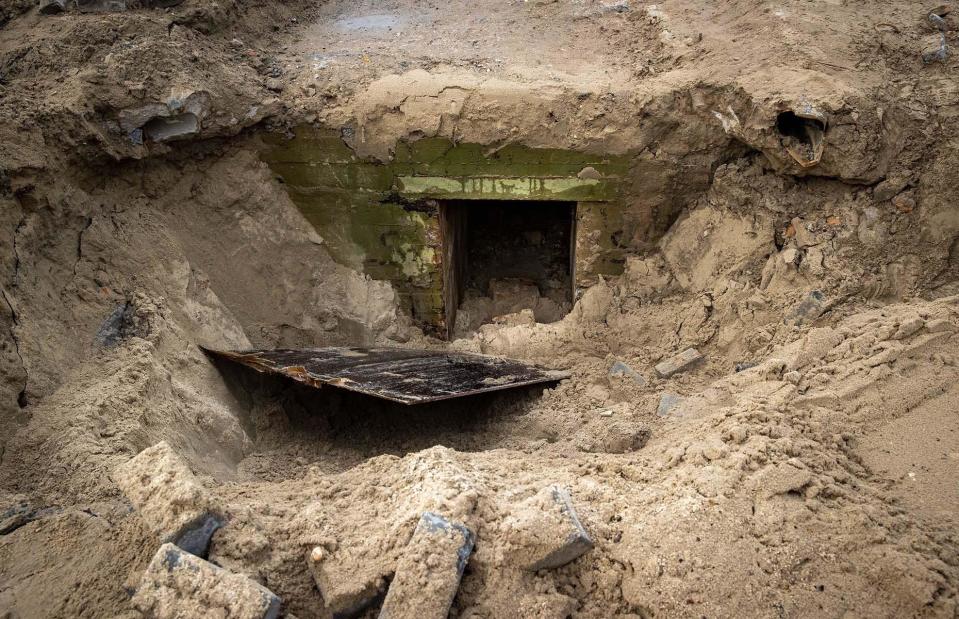
Belga News Agency / Alamy Stock Photo
The bunkers, which were part of the Atlantic Wall, had long been forgotten after a previous casino and car park were built over the top of them after the end of the war.
Despite the entrances to the underground shelters being filled with sand, the interiors were remarkably well preserved as you will see.
German seaside bunker, Middelkerke, Belgium

KURT DESPLENTER / BELGA / AFP via Getty Images
Inside, the bunkers were surprisingly spacious, with relatively high ceilings. Several official-looking inscriptions still adorned the walls, such as one indicating that the light must not be turned on, according to VRT News.
No weapons or personal belongings were found at the site and it's believed these were probably removed by the Canadian or British troops who liberated the area.
German seaside bunker, Middelkerke, Belgium
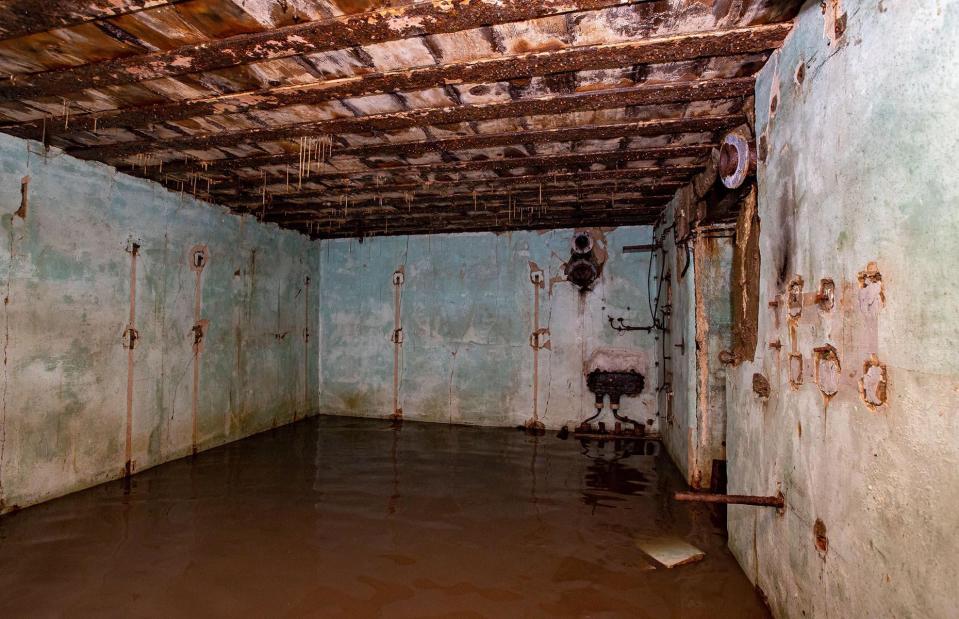
Belga News Agency / Alamy Stock Photo
"In a bunker like this, it's not just the materials and found objects that are important. The story that surrounds it also matters," the Flemish Heritage Minister said after visiting the site.
"There is a lot of interest and the bunker also gives us a better idea of how the war played out here."
German seaside bunker, Middelkerke, Belgium

Didier Messens/Getty Images
After a thorough examination by the archaeologists, the bunkers were demolished to make way for the new casino (pictured). However, their destruction may not have been easy thanks to the six and a half feet-thick concrete walls built to protect the occupying forces inside.
Now take a tour of more fascinating bunkers around the world


